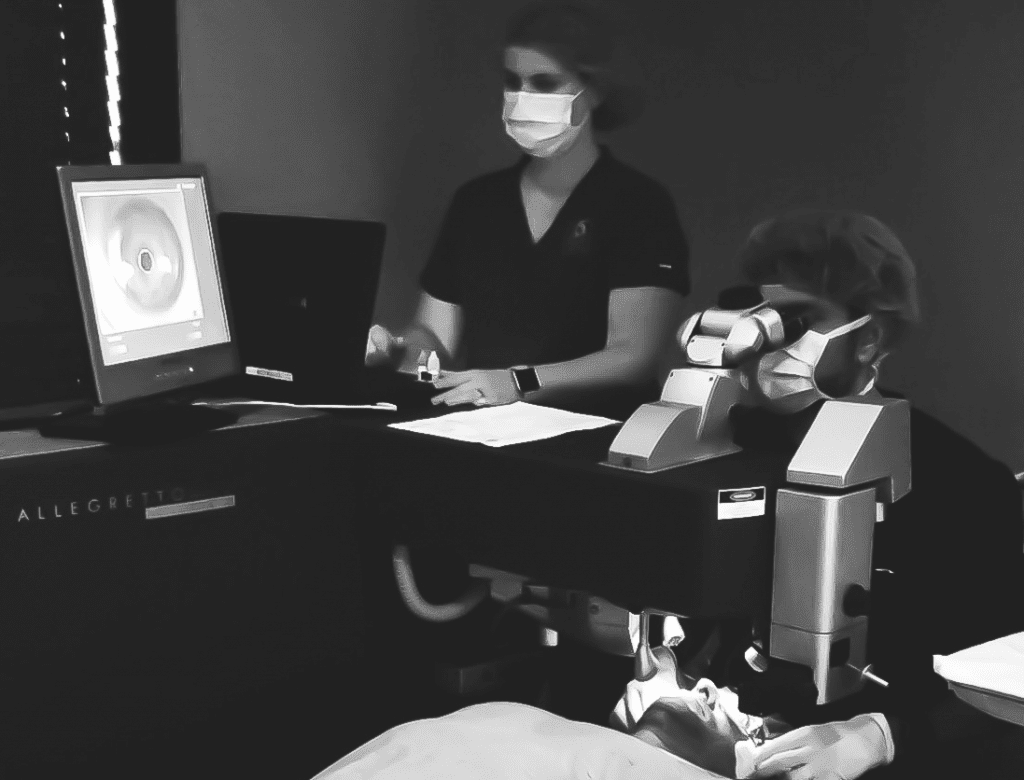Photorefractive Keratectomy or “PRK” (also known as Advanced Surface Ablation) is also a laser treatment option for patients who are nearsighted or who have astigmatism. It is a proven procedure that uses the same laser technology as LASIK and is excellent for athletes, patients who have a thin cornea and is commonly recommended for patients who are not ideal candidates for LASIK.

With recent advances in technology, more and more people are prime candidates for laser eye surgery. Most LASIK patients are candidates for PRK; however, not all candidates for PRK are candidates for LASIK. There are many factors that can determine which option is the best for you.
Although these surgeries appear very similar, there are a few key differences between them. The main difference lies in how the laser penetrates the patient’s cornea for their vision correction to be permanent.
During a LASIK procedure, an incision is made in the cornea to create a flap of tissue. This flap is then lifted, and a laser is applied to the underlying corneal bed to reshape the cornea. The flap is then put back into its original position and allowed to heal naturally over the next several days. Antibiotic and steroid drops are used post-operative for a short period of time to aid in healing.
During a PRK procedure, the fine outer layer of the cornea, or epithelium, is removed to expose the underlying cornea instead of creating a hinged flap as is done in LASIK. The same excimer laser is applied to the underlying cornea. A bandage contact lens is placed on the eye to promote healing of the removed cornea which re-grows naturally within a week. Antibiotic and steroid drops are also used post-operative for a longer period of time compared to LASIK.
The difference between these two surgeries is not found in the results. Studies have shown that LASIK and PRK provide similar vision correction. However, patients are often less comfortable post-operatively and visual recovery is slower with PRK. The difference is in how long it takes to get the desired visual outcome. Given the success of LASIK, PRK is now mostly used for patients who are prone to healing problems, have thinner corneas, have high prescriptions, and have other reasons that make them poor candidates for LASIK.
With PRK surgery, the initial discomfort, blurriness, and distorted vision can last for several days. Peak clarity from PRK laser eye surgery can take up to six months. The main advantage of PRK is, however, it leaves the integrity of your cornea stronger than LASIK since no flap is created.
In LASIK surgery, the discomfort that follows is usually mild and short-lived. Many patients report that their visual acuity is dramatically improved within a few hours after surgery, although this continues to refine over the coming months. Peak clarity is normally achieved within three months’ time.
Whether you require cataract surgery, LASIK, or other eye surgery; you want the best care when it comes to your vision, regardless of your budget. To make quality care accessible to everyone, Milan Eye Center offers zero-down financing options with approved credit through Wells Fargo, CareCredit, and Alphaeon. We also accept all FSA/HSA plans.
Make an appointment today at one of our eight convenient Atlanta-area locations.
Schedule an Appointment Online
Or call 678-381-2020